Infrared heaters: varieties, specifications, advantages and disadvantages compared with convective heat sources.
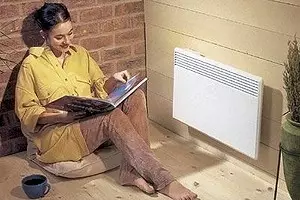
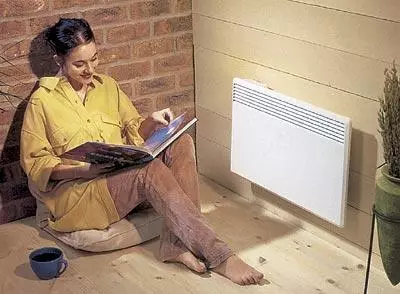
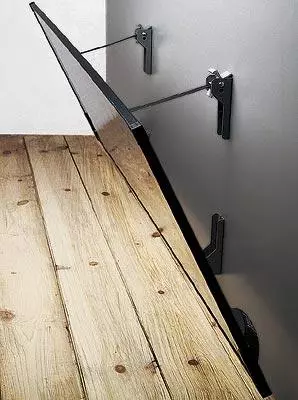
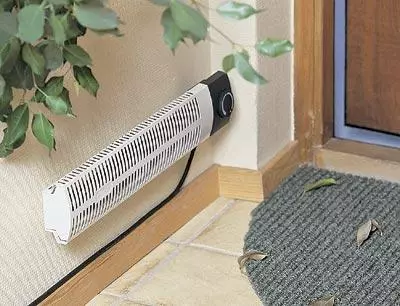
The long-wavelength heater successfully works as a guard on the way of cold air in the hallway.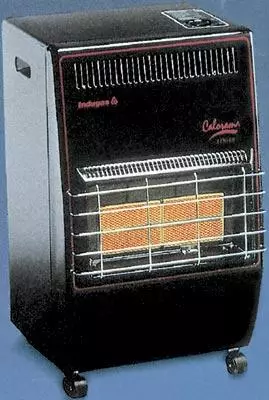
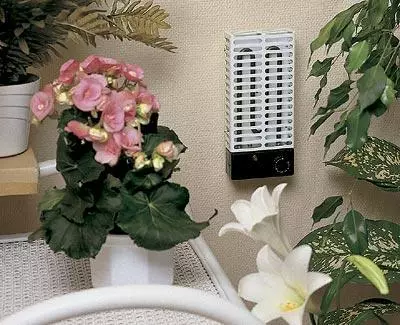
With the help of infrared rays, almost natural microclimate for plants is reproduced.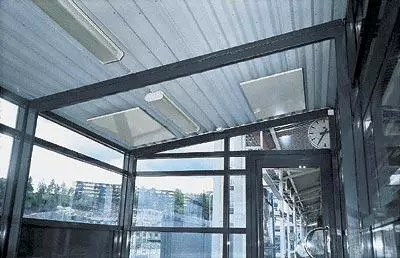
Placing panels on the stream, you can get either full illumination of the room or its individual sections.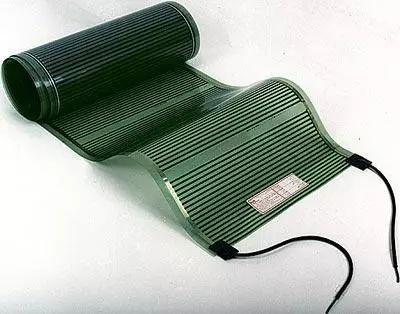
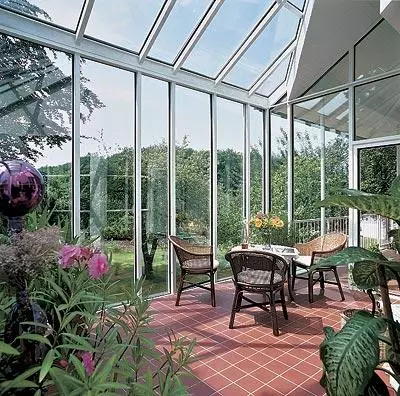
The IR emitters with a capacity of more than 1.5 kW put at an altitude of more than 3 m, otherwise they will be burned under them - like under the sun at noon.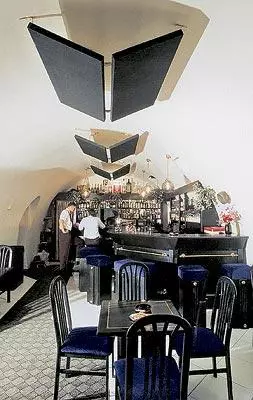
Praphrazing the inventor of Russian vodka, it can be said that we are at home by the dignity, and large dignity. Our article tells about the possibility of more economical and comfortable heating with infrared radiation, as long as Russian consumers are known.
In traditional heating systems (radiators, convectors, fireplaces, etc.), specialists strive to do everything so that heat from the heating device is intensively assigned to the surrounding space and then spread throughout the room due to the mixing of the air mass. Such a mechanism is called "convective", and heaters are "convective". But the so-called infrared (radiant) sources are increasingly replacing. The principle of action of the latter is as follows: the radiant stream of energy infrared (IR) range heats the items themselves, and not the air in the room. This is the way Nature itself uses: as the sun heats the land with rays flying millions of kilometers and the IR heater sends heat rays to the floor, furniture, human body, and other objects. The latter are heated and, in turn, heated the ambient air and the entire room. That's why we can not get enough sleep on a sunny day in the winter on a sunny day, without noticing the frost, and when IR heaven feel comfortable at the air temperature in the room 16-18C!
Consider in more detail IR sources of heat, their advantages and disadvantages and compare with convective. Talking briefly, the first works faster and more economical. The streams of their energy spread at the speed of light and in our conditions are practically not absorbed by molecules of nitrogen and oxygen, which components of the air base. That is, in the room you can create local comfort zones, spending less energy and time.
With convective heating, the rise of hot air upwards leads to the fact that the lowest temperature turns out to be at the floor, and the highest - under the ceiling. With IR sources, everything is different: the temperature below, in the human stay area, will be higher than under the ceiling, and the energy will spend less. By the nature of the luminosity of the radiators of IR heaters can be divided into: a) the light, having a surface with a temperature of more than 600C, and b) dark, or long-wave, temperatures less than 600C.
The first type includes special lamps, chandeliers, emitting panels having a operating temperature in the range of 800-1000s, which provides specific power up to 100 kW with 1 m2. It is preferable to apply where many heat is required for heating.
Dark heaters manufactured in the form of fuel panels and films, as well as individual cassettes, have a operating temperature from 30 to 400 ° C and are able to provide specific power up to 1000 W with 1 m2 (in practice - no more than 350). They are more often used where heat requires not so much.
By type of primary energy carrier, IR heaters can be divided into: a) electrical; b) solid and liquid-fuel; c) gas. For the heating of household, including residential premises more often use the first and last. This is primarily due to the environment of a person's stay (there is very little or not at all combustion products). However, it is necessary to be aware that the environmental purity of electric heating has to pay five times more than other sources of heat.
Historically, it was so that the very first IR emitters used in everyday life became the simplest electrical reflectors consisting of nichrome wire wrapped on an insulator and polished reflector. Generation of people over 40 years of age remembers these small compact devices with a capacity of about 500 W. Currently, electrical low-temperature IR heating systems are distributed in the West. They are a number of heat-insulating panels and / or films that have operating temperatures less than 100 ° C. The basis of such a system is a film with a special coating applied to it. From the end, it has two contacts for supplying electricity. The primary voltage (220 V) by means of a special transformer decreases to a safe value for a person (~ 40 V). In the film, the coefficient of the transformation of electrical energy into thermal reaches 99.8%, which ensures its economical use. Similarly, glass or coated glass or mirror panels work (NOBO, NORWAYA and ACSO Production, France). The waves emitted by such sources correspond to solar, which means that they are favorably affected by a person, providing him with the most comfortable conditions. In our Russian conditions, this as a whole is a good system road, and it is better to use it not as the main one, but as an additional (local).
Electric, made in the form of panels suspended under the ceiling or on the ceiling itself, heaters usually have a standard size of 600 x 600 mm. Radiating cassettes are usually similar to daylight lamps. With a capacity of 0.3 - 2 kW, they have a suspension height of at least 2.5 m and are optimal heat sources in the hallways, living rooms. (As a practical council, we recommend not to use separate IR emitters with a capacity of more than 1.5 kW, with a ceiling height of less than 3 m, since it will be firing right under them: in the case of a long stay of a person in a direct illumination area with it, a thermal blow may happen.)
Among the IR emitters using various fuels as an energy source, those that work on natural and liquefied gas have become the greatest distribution. The main element is the burner: a ceramic panel with a multitude of through holes. The gas from the highway or a cylinder is supplied to its mixer, where it is effectively mixed with the desired amount of air; The mixture falls into the holes and is ignited. The combustion is performed by the method of flameless burning inside porous ceramics, as a result of which the bulk of the heat is released in the panel itself, and does not go into space, as in convective heaters. The ceramic panel is riveted to 800-1000s and gives heat as a radiant stream; It remains only to effectively direct it to a heated subject.
In the process of improving IR burners, the content of harmful substances (mainly nitrogen oxides and carbon monoxide) in combustion products were reduced, and the radiant heating system was admission to the public utility market. They began to be used in greenhouses, greenhouses, covered courts, pools, garages, etc. in such premises, depending on their area (volume), it takes from 5 to 200 kW of thermal power. Gogaz offers an IR-emitter 10-30 kW for these purposes, the weight of one module from 10 to 25 kg, natural gas consumption from 1 to 3 m3 / h. The system of control and control consists of a control unit, temperature sensors and gas valves. Naturally, the connection to the natural gas highway is required. The cost of all equipment can reach $ 5-10 thousand, but operating costs will be 2-5 times less compared to systems using electrical energy or burning liquid fuels.
Kaspo (Czech Republic) offers gas IR emitters at a price of 2-3 times cheaper. Thus, the cost of the module with a capacity of about 20 kW is about $ 700, and along with control and control and control - about $ 1500.
What should I do if you need to drop the room with an area of not more than 10-50 m2, and spending several thousand dollars is not possible? There are separate IR emitters with a capacity of 2 to 15 kW, described above. They are truly mobile, as they work on a liquefied gas contained in household cylinders with a capacity of 5-50 liters, easy to operate, are placed at any desired point, it is inexpensive. The most simple emitters, with a capacity of 2-3 kW, intended for heating small household and non-production rooms with an area of up to 20 m2, are produced in Moscow ("Argo"), Ryazan ("Corner"), St. Petersburg ("Sunshko") and in Izhevsk . They cost $ 25-50. It is best to exploit them together with household gas cylinders with a volume of 27-50 liters, equipped with a shut-off valve (they are easily transferred by one person and, depending on the power, is sufficient for 50-200 hours of continuous operation.) Russian industrial company "Bi-car" (G. St. Petersburg) mastered the production of mobile gas heaters of the Serena series. They are distinguished by a good design, imported components, the availability of automation of security, but they are more expensive.
There is still a group of IR emitters, which is primarily intended for summer cafes, veranda, arbors. They are made in the style of gas lighting lights and at ambient temperature about 10s are able to heat the area to 20-25 m2 (this is enough to drink tea in the fresh air). They are not suiced - from $ 1000 and higher (for example, emitter "Arbat" of the company "Bi-car"). There are other analogues, for example, "Frakarro" (Italy) - they are certified in Russia, but it is much more expensive than "Arbat".
A number of foreign firms, primarily Spain, Italy, France, are offered for sale in Russia IR heaters - fireplaces working both on natural and liquefied gas. They are equipped with the ignition and flame control automatics, as well as a carbon monoxide control sensor (in case of exceeding the allowable level, an automatic shutdown occurs). However, for the Russian, there is one "but" here: Western standards of residential premises suggest good ventilation, and in our small rooms, such a multiple air exchange is usually absent. It means that if the above sensor works, it will not allow to start the heater again for a long time. Therefore, it is unlikely to include a similar fireplace in a bedroom, not equipped with forced ventilation.
The company "Inzhproekt SK" (Russia) has developed environmentally friendly gas IR burners. In them, the content of harmful substances during gas combustion is brought to the level of the natural background. The burners are certified, have admission to work in domestic and residential premises, including with natural ventilation. With high environmental cleanliness, they consume fuels 1.5-2 times less than ordinary flame burners. The stove with two gas burner costs about $ 40.
In conclusion, I would like to give the consumer a few more practical advice:
- In residential premises with a long-lasting person's stay, the best are electrical low-temperature film IR heaters. The lower the temperature of their emitter, the more comfortable conditions may they create.
- In rooms with good ventilation, the electrical and gas IR emitters and heating systems based on them are better. From the point of view of saving funds, preference can be given by gas, standing out of competition and in garages, and greenhouses, and in the cabins.
Characteristics of electrical IR heaters
| Firm | Model | Thermal power, kW | Sizes, see | Mass, kg. | Note |
|---|---|---|---|---|---|
| "Marley Electric", USA | Cf. | 0.25 ... 0,75 | 61 (122) x61x2,5 | 2 ... 3. | Ceiling panel, 6 models |
| "Hinging", USA | SRN. | 1.5 ... 2.5 | 100 (150) x25x25 | 3. | IR heater, 3 models |
| BRM 4521. | 4.5 | 150x25x25 | 8,2 | Powerful IR heater | |
| "Ventivotch", England | Cyberm | 0.4. | 240x60x0.9 | sixteen | Low-temperature film |
| "Technical systems and technologies" | Elk | 0.4 ... 1,2 | 70 (150) x17x10 | 3 ... 6. | Long-wave heater |
| FRICO, Sweden | NR | 0.3 ... 0,6 | 60 (120) x60x8 | 5 ... 10. | Ceiling cassette |
| IR | 3 ... 6. | 170 (200) x36x8 | 13 ... 16. | IR emitter | |
| "Karee Noir", Russia | — | 250 W / m2 | Roll, width - 55 | 0.5 kg / m2 | Heavy film |
Characteristics of gas IR heaters
| Firm | Model | Thermal power, kW | Gas consumption, kg / hour | Mass without a gas cylinder, kg | Cost, $ US |
|---|---|---|---|---|---|
| "Sam", Ryazan | GIA-1.85 "Corner" | 1,85. | 0.14. | four | twenty |
| "Northern Plant", Saint Petersburg | GIA-2.3 "Sun" | 2,3. | 0.17. | 2,3. | 25. |
| "Krasnaya Star", Moscow | Argo | 3. | 0.23. | 3. | 25. |
| "Bi-car", Saint Petersburg | Var5. | 5,2 | 0.38. | five | 80. |
| Var7 | 6.3. | 0.5 | 6. | 100 | |
| Var9. | 8,4. | 0,66 | 7 (no trolley) | 150. | |
| Fusch, Germany | LP4300Z. | 4,3. | 0.32. | five | 550. |
| LP4300PZ. | 2.5 ... 4,3. | 0.19..0,32 | five | 600. | |
| Gogaz, Germany | AR704R | 3.5 | 0.25. | four | 450. |
| AR707R | 2x3.5 | 0.5 | nine | 700. | |
| ATZS4-14 * | 4 ... 14. | 0.25 ... 1.5 | 10 ... 40. | — |
* - Four models.
The editors thanks the firm "Inzhproekt SK" for help in the preparation of the material.
